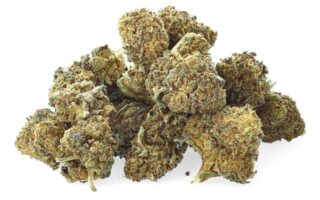In the vibrant landscape of recreational substances, two names often emerge in conversation: cocaine and Molly. Both have carved out distinct identities within the world of party culture, each carrying with it a unique history, effects, and social implications. While cocaine has long been associated with glamor and excess, Molly—a contemporary derivative of ecstasy—offers a connection to the euphoric highs of the electronic dance music scene. As users navigate the allure of these substances, it becomes essential to unpack the nuances that separate and define them. What do these substances promise, and at what cost? In this exploration, we will delve into the chemistry, cultural significance, and the often murky waters of perception surrounding cocaine and Molly, aiming to shed light on their similarities, differences, and the choices that lie therein.
Table of Contents
- Understanding the Chemical Composition and Effects of Cocaine and Molly
- The Social Context: Usage Patterns and Cultural Perceptions
- Health Risks and Safety Concerns Associated with Each Substance
- Harm Reduction Strategies: Making Informed Choices for Safer Experiences
- Q&A
- The Way Forward
Understanding the Chemical Composition and Effects of Cocaine and Molly
The chemical composition of cocaine and molly reveals significant differences in their structure and effects on the body. Cocaine, derived from the coca plant, is chemically classified as a stimulant, specifically a tropane alkaloid. Its formula, C17H21NO4, indicates the presence of nitrogen, contributing to its addictive properties. On the other hand, Molly, often associated with ecstasy, primarily comprises MDMA (3,4-methylenedioxymethamphetamine), which has a distinct molecular structure with the formula C11H15NO2. The presence of a methylenedioxy group in MDMA significantly influences its psychoactive effects, resulting in enhanced emotional closeness and empathy among users.
Both substances exert their influence through the neurotransmitter systems but do so in different ways. Cocaine primarily inhibits the reuptake of dopamine, leading to a burst of euphoria and energy that can result in heightened alertness and increased heart rate. In contrast, Molly boosts the release of serotonin, dopamine, and norepinephrine, producing feelings of empathy, sensory enhancement, and emotional well-being. However, the distinct impact of each substance also calls for caution due to potential side effects as seen in the comparison below:
| Substance | Effects | Potential Risks |
|---|---|---|
| Cocaine |
|
|
| Molly |
|
|
The Social Context: Usage Patterns and Cultural Perceptions
The widespread use of cocaine and Molly reveals distinct social contexts and cultural perceptions that shape their usage patterns. Traditionally, cocaine has been associated with a more elite, corporate party scene, where it often symbolizes social status and power. Many users perceive it as a tool for enhancing productivity and stamina, making it appealing in high-pressure environments. In contrast, Molly, or MDMA, is commonly linked to the rave culture and communal settings such as music festivals. It embodies a sense of connection and euphoria, often celebrated for promoting feelings of love and acceptance among users.
Usage patterns for both substances also highlight their differing cultural narratives. While cocaine consumption tends to lean towards a more individualistic experience, often consumed in private settings or exclusive parties, Molly encourages a collective experience, shared amongst friends and fellow festival-goers. This divergence can result in varying public perceptions, where cocaine is often stigmatized due to its associations with addiction and crime, whereas Molly enjoys a somewhat more favorable image as a “party drug” that fosters positivity. Below is a comparison of social perceptions surrounding each substance:
| Aspect | Cocaine | Molly |
|---|---|---|
| Social Setting | Private, elite parties | Music festivals, raves |
| Perceived Effects | Increased energy, focus | Euphoria, emotional connection |
| Public Stigma | High stigma, linked to crime | Lower stigma, seen as positive |
Health Risks and Safety Concerns Associated with Each Substance
The consumption of cocaine can lead to a myriad of health risks, affecting both the body and mind. Short-term effects may include heightened energy, increased alertness, and euphoria; however, these can quickly turn negative. Users may experience increased heart rate, elevated blood pressure, and increased body temperature, putting significant strain on the cardiovascular system. Long-term use can result in serious consequences such as heart attacks, strokes, and mental health disorders like anxiety and paranoia. Additionally, the potential for addiction is high, prompting a compulsive need for the substance that can wreak havoc on personal relationships and overall well-being.
On the other hand, while molly (MDMA) is often perceived as a party drug, it carries its own set of risks, especially when purity is in question. Commonly experienced side effects include nausea, chills, and jaw clenching. More critically, excessive use can lead to hyperthermia, which is a dangerously high increase in body temperature. Long-term use has been associated with cognitive impairments and depression. Furthermore, the mixing of molly with other substances, often unknown to the user, can exacerbate health risks, making it crucial for individuals to be aware of what they’re ingesting. Relying on unregulated sources can introduce substances that add to the dangers already present with molly consumption.
| Substance | Health Risks | Safety Concerns |
|---|---|---|
| Cocaine | Cardiovascular issues, addiction, anxiety, paranoia | Illicit production and potential adulteration |
| Molly | Hyperthermia, cognitive impairments, depression | Purity issues, unintentional mixing with other substances |
Harm Reduction Strategies: Making Informed Choices for Safer Experiences
When navigating the complex landscape of recreational substances, understanding the differences between cocaine and molly is crucial for making informed choices. Cocaine, a powerful stimulant derived from coca leaves, primarily affects the central nervous system, leading to increased energy and heightened alertness. Users may experience euphoria, but the risks are notable: potential for addiction, cardiovascular issues, and severe withdrawal symptoms. In contrast, molly, often a pure form of MDMA, is known for its empathogenic properties, enhancing feelings of connection and emotional warmth. However, it too carries risks such as dehydration, overheating, and potential neurotoxicity, especially when taken in high doses or when purity is compromised.
To promote safer experiences, here are several harm reduction strategies to consider:
- Testing Kits: Utilize reagent testing kits to check the substance’s purity and avoid adulterants.
- Stay Hydrated: Ensure adequate hydration but avoid excessive water intake.
- Pace Yourself: Start with small doses and wait to gauge effects before taking more.
- Trusted Company: Surround yourself with friends you trust, keeping an eye out for each other.
- Know the Risks: Educate yourself about each substance, their effects, and risks associated with use.
Q&A
Q&A: Cocaine vs. Molly – A Comparative Look at Two Popular Substances
Q: What are cocaine and Molly? How do they differ in terms of chemical composition?
A: Cocaine is a powerful stimulant derived from the leaves of the coca plant. Its chemical structure is known as benzoylmethylecgonine, which categorizes it as an alkaloid. Molly, on the other hand, is a common name for MDMA (3,4-methylenedioxymethamphetamine), a synthetic drug known for its empathogenic effects. While both substances influence the brain’s neurotransmitters, cocaine primarily enhances dopamine levels, driving up energy and euphoria, whereas Molly boosts the release of serotonin, leading to feelings of love, emotional warmth, and connectedness.
Q: How do users typically consume cocaine and Molly?
A: Cocaine is most often snorted in its powdered form, though it can also be smoked or injected. Users gravitate towards it for its rapid onset and intense, short-lived high. Molly, typically encountered in a crystalline or pill form, is usually ingested orally, with users often choosing to encapsulate it in pill form or mix it into drinks. This method allows for a slower onset with a prolonged experience, often lasting several hours.
Q: What effects can users expect from each substance?
A: Users of cocaine can expect a burst of energy, increased alertness, and intense euphoria, coupled with potential anxiety and paranoia. The heightened sense of confidence can lead to risky behaviors, and the crash that follows can be quite severe. Conversely, Molly users often experience emotional closeness, a sense of well-being, and enhanced sensory perception. However, this can come with risks of dehydration, overheating, and, in some cases, dangerous drops in serotonin levels leading to mood swings.
Q: Are there any common health risks associated with cocaine and Molly?
A: Yes, both substances carry significant health risks. Cocaine can lead to cardiovascular issues, including heart attacks and strokes, even in young and otherwise healthy individuals. Its addictive nature can also create a cycle of dependency. Molly, while often seen as “safer” due to its empathogenic properties, can pose risks like neurotoxicity, especially when used in high doses or when adulterated with other substances. Both can lead to severe psychological impacts, including anxiety, depression, and, in the case of long-term use, potential addiction.
Q: How do social contexts influence the use of cocaine and Molly?
A: The environments in which these substances are often consumed differ significantly. Cocaine has historically been associated with nightlife and high-energy social settings, often appealing to those seeking a temporary escape or increased social status. Molly, commonly linked to electronic dance music (EDM) festivals, concerts, and rave culture, emphasizes connection and communal experiences. The social perceptions and cultural associations around these drugs can greatly influence an individual’s likelihood of use.
Q: What should individuals know about the legal status of cocaine and Molly in various regions?
A: Cocaine is classified as a Schedule II drug in the United States, making it illegal for recreational use due to its high potential for abuse. It is sometimes prescribed in limited medical applications. Molly, classified as a Schedule I substance, is illegal in almost all contexts, as it is considered to have no accepted medical use and a high potential for abuse. Legal status can vary significantly in other countries, with some having more lenient policies while others impose severe penalties.
Q: what key takeaways should people understand about the comparison between cocaine and Molly?
A: While both cocaine and Molly deliver powerful and enticing effects, they come with distinct chemical properties, social contexts, and health risks. Awareness of these differences is crucial for informed choices. Regardless of their variances, both substances can lead to serious health consequences, and understanding their implications can guide individuals toward safer practices or alternative approaches. Always prioritize education and harm reduction when navigating the complex world of recreational substances.
The Way Forward
In the intricate dance of recreational substances, cocaine and molly each occupy distinct stages, captivating and intoxicating in their own ways. While cocaine, with its high-energy bursts and sharp edges, appeals to those seeking a fleeting thrill, molly offers a euphoric embrace, inviting connection and heightened sensations. As we explore these two substances, we uncover not just their chemical distinctions but also the cultural narratives and personal stories woven around them.
the choice between cocaine and molly is not merely about preference; it reflects deeper desires, aspirations, and the quest for experience in the human journey. As we continue to navigate the complexities of these substances, it becomes crucial to approach them with awareness, understanding the potential risks and rewards they carry. Knowledge, after all, is the first step toward making informed decisions in a world where the allure of pleasure often competes with the clarity of judgment. Let us carry forward this understanding, fostering a culture of informed exploration rather than reckless abandon.



